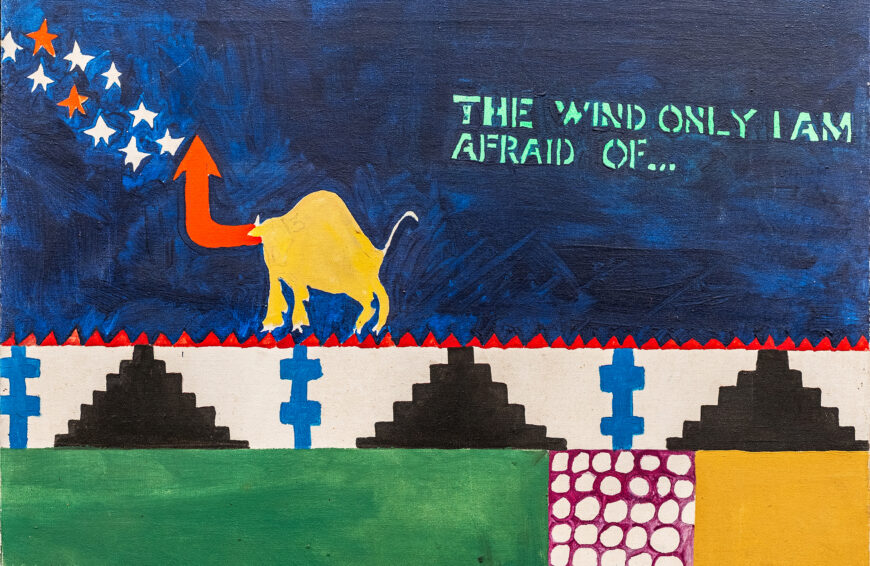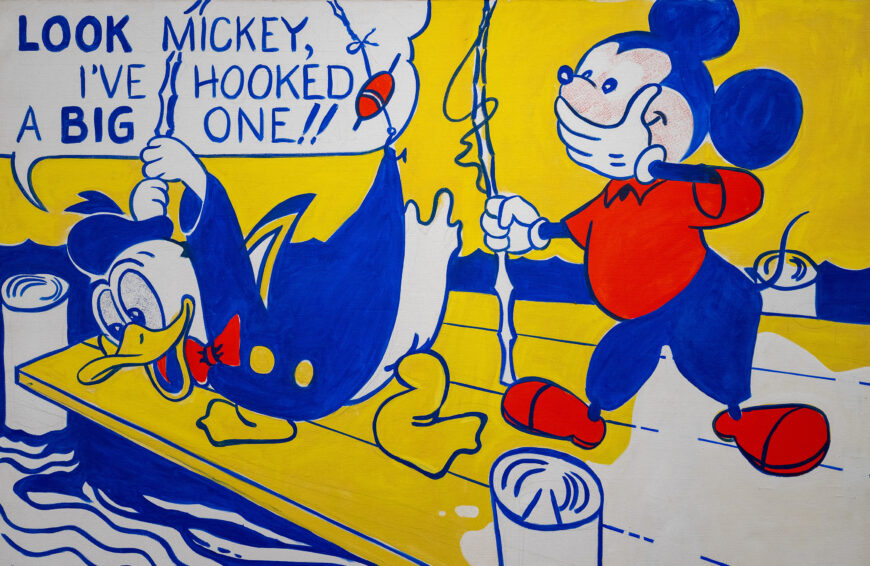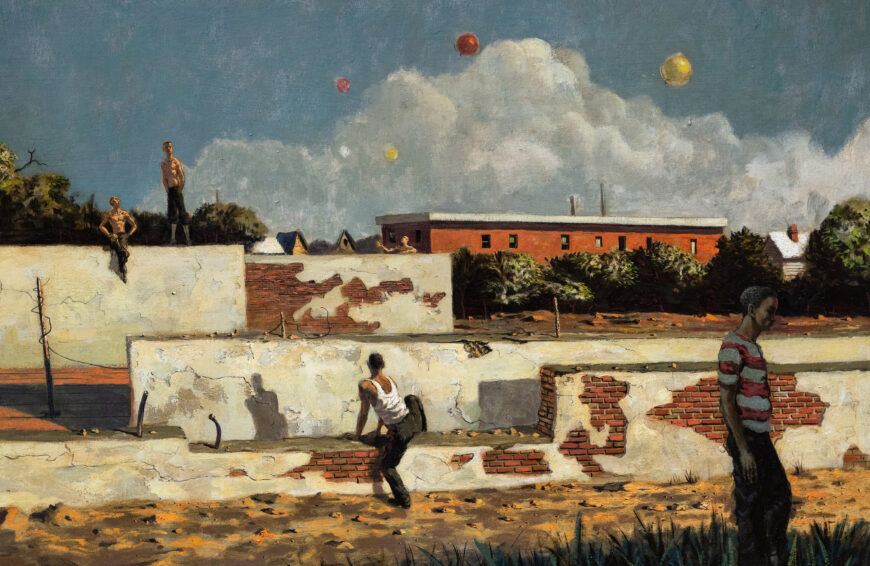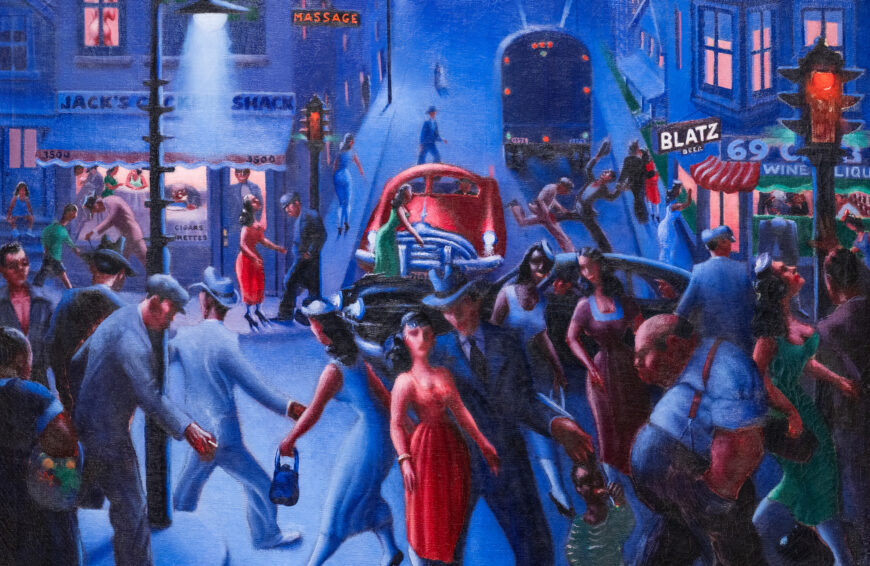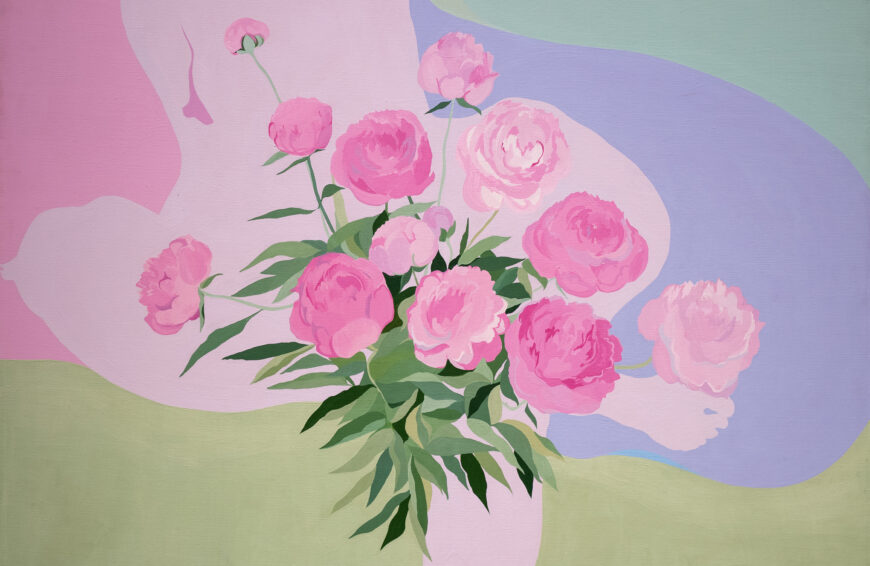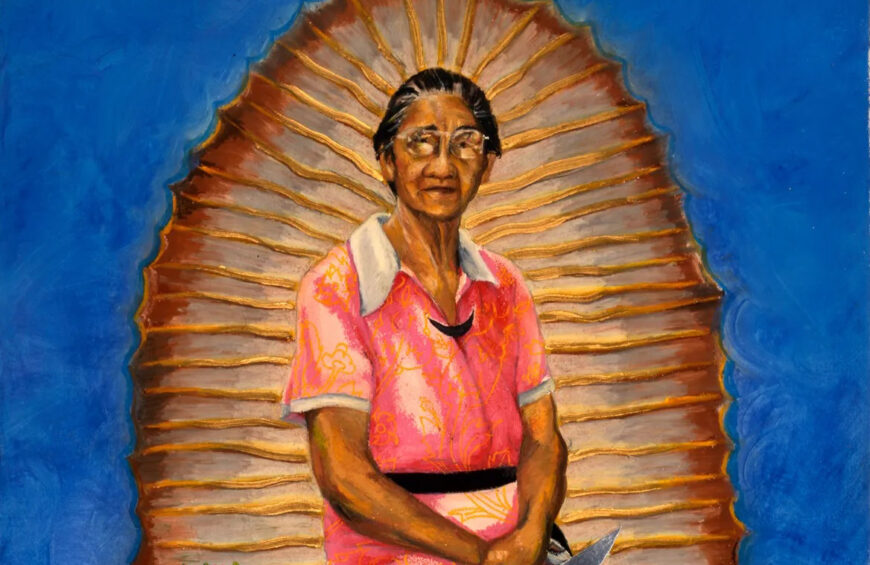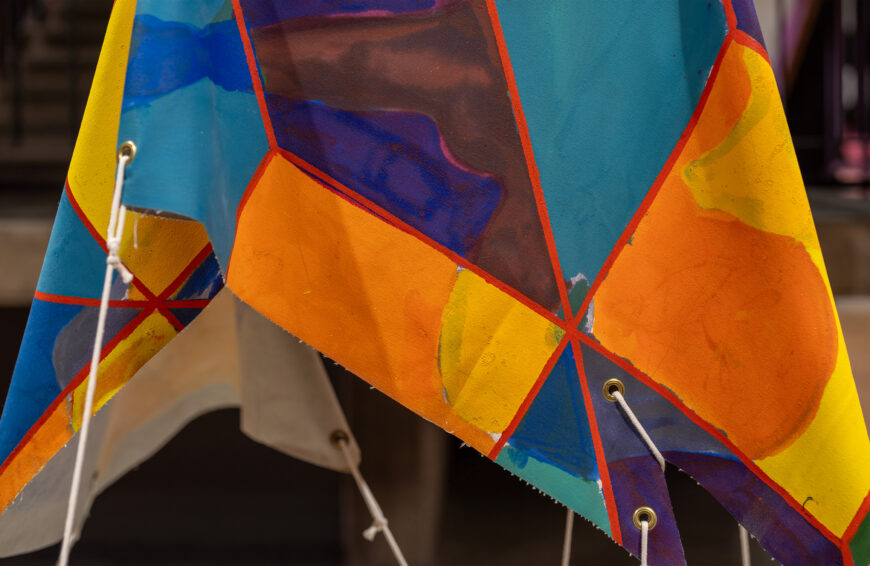Norman Rockwell, Rosie the Riveter, 1943, oil on canvas, 52 x 40 inches (Crystal Bridges Museum of American Art)
Norman Rockwell, Rosie the Riveter
[0:00] [music]
Dr. Beth Harris: [0:04] We’re at the Crystal Bridges Museum of American Art, looking at an American icon, Norman Rockwell’s painting of “Rosie the Riveter,” from 1943.
Dr. Margi Conrads: [0:14] We see this woman who is muscular, tough, wearing goggles, eating a ham sandwich and wearing denim overalls, that iconic image of the support that women lent on the home front for World War II.
Dr. Harris: [0:33] Thousands and thousands of women entered the workforce during the war. Men went to serve in the war, and women served their country by going to work, taking the place of men.
Dr. Conrads: [0:45] If you were able to see a picture of the woman who sat as Rockwell’s model for Rosie, she was much more feminine, but he marries her face with the prophet Isaiah that is at the top of the Sistine Chapel.
[1:02] That figure that Michelangelo created was this incredibly muscular figure, so in a way this is a male figure onto which a female head and then also a more voluptuous body is created. He also uses that point of view that Michelangelo used so well. Having us, the viewer, look up at the figure.
[1:28] Anytime that you’re looking from below, it makes the figure loom larger.
Dr. Harris: [1:34] And that machine she’s carrying, the riveter that she used to construct airplanes, it looks heavy. It looks like she must have been very strong to carry that and to do her job.
Dr. Conrads: [1:46] You get the sense that she has the power, both the physical power but also the grit, to be successful. I love the way that she is holding her lunchbox, which gives us her name, Rosie.
[2:03] She is almost holding it like an animal claw, going over it, that is again so strong. She’s on her lunch in this picture, but there is nothing relaxed about her. She is on a mission and she is never going to waver.
[2:21] We have the stars and stripes reminding us her reason for taking on this work. At the same time, if you look at her feet, and she’s wearing such an American pair of loafers.
Dr. Harris: [2:35] Oh, and I love her socks.
Dr. Conrads: [2:36] Don’t you love her socks? You can just really feel the texture of them. She is standing and crushing a copy of “Mein Kampf.”
Dr. Harris: [2:47] That was a book that Hitler wrote explaining his anti-Semitic ideology and his plans for Germany. What’s interesting to me, too, is that riveter, that machine, and the hose that comes out of it almost reads like a serpent. There is a passage in Isaiah where he refers to the serpent. Of course, this is a symbol of evil.
[3:10] We have a sense of her righteousness, her patriotism, her desire to serve her country, and also to stamp out Nazi ideology.
Dr. Conrads: [3:21] That riveting drill has overcome that serpent-like shape and basically brought it under control.
Dr. Harris: [3:30] Also, when you said that idea of it being on her lap, I thought immediately of images from the Renaissance of a Madonna and Child. Here, no child, but a machine.
Dr. Conrads: [3:41] Where that takes me is to thinking about how this painting is created in 1943. America’s increasing connection to the war, lending that power that would allow the Germans to be defeated, was really coming into its own at this moment. We see the home version of what’s helping that happen.
Dr. Harris: [4:06] I just want to throw in my favorite part, which is what’s tucked into her pocket, because in all of her strength, in all of the way that she reads in a masculine way, she’s got a compact and a handkerchief. She’s working in this job that is traditionally a man’s job, wearing man’s clothing and these masculine-looking shoes and socks. She’s not forgetting her femininity.
Dr. Conrads: [4:32] I love the fact that it looks like she’s just put on her lipstick. Even in the pose, it has an elegance that does have a feminine twist to it.
Dr. Harris: [4:43] You can sense that the paint was applied very thinly. You can see the texture of the canvas underneath, as though Rockwell seems to have chosen a canvas that was especially coarse in its weave. Her roughness and her ability to tough it out and do what her country needs fits with the surface that this was painted on.
Dr. Conrads: [5:06] It allowed Rockwell to get that feeling of blue-jean denim without having to actually paint the texture. Another detail that I just love in this painting is the row of buttons. You see a Red Cross pin. You also see a V-for-victory pin. You see some other buttons that relate to supporting organizations that were lending help, particularly those that women were engaged in for the war.
[5:38] Here, they also act as her jewelry. In another circumstance, if she had had on her white cotton blouse and her skirt, she would have probably had on a necklace to go with. Here, the organizational buttons provide that.
Dr. Harris: [5:53] It’s funny that you said that, because I was just thinking about how overalls are fashionable today, and how unusual this would have been, to see a woman wearing clothing like this. This must have been shocking in a way that I think is hard for us to recapture today.
Dr. Conrads: [6:11] There’s so many things that were overturned during this World War II period as far as what was acceptable for women to do. It’s interesting because after the war, there was a real tension and real challenges. Particularly in the workplace, because women proved that they could do the job of men.
[6:35] When you had veterans coming home who, of course, wanted their jobs back, there was on the one hand this great freedom that women felt. They really felt that they could go on and do so many more things than, say, in the pre-war era.
[6:52] At the same time, there was a conversation around what really is a woman’s proper place.
[6:59] [music]
| Title | Rosie the Riveter |
| Artist(s) | Norman Rockwell |
| Dates | 1943 |
| Places | North America / United States |
| Period, Culture, Style | Modernisms / Social Realism |
| Artwork Type | Painting |
| Material | Oil paint, Canvas |
| Technique |
Loading Flickr images...


